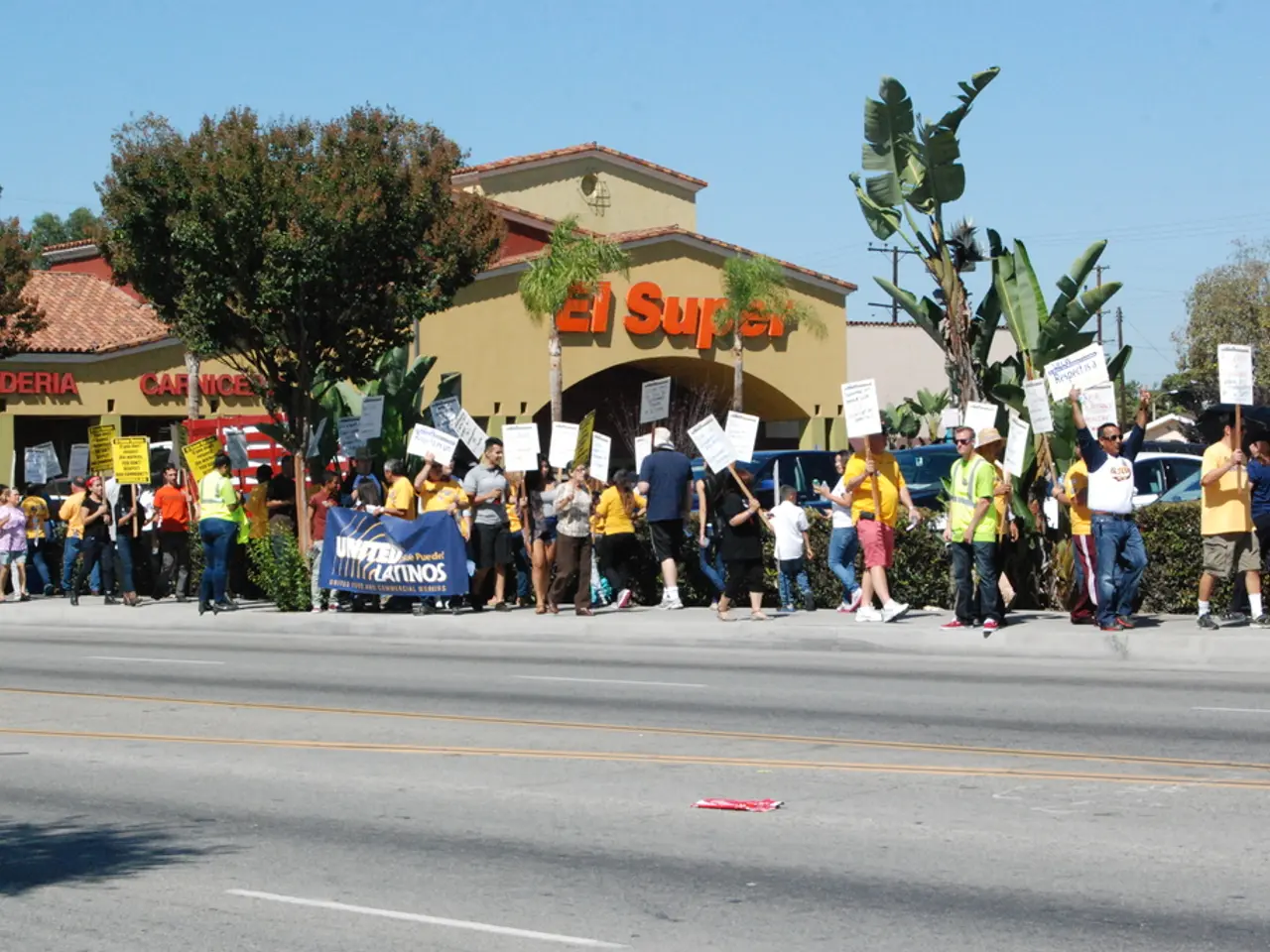Strategies for Implementing Machine Learning in Political Campaigns
In the contemporary political landscape, machine learning is becoming an indispensable tool for political campaigns. This technology offers a wealth of opportunities to improve voter targeting, optimize resource allocation, and enhance democratic engagement.
Machine learning can help political campaigns predict voter turnout by analysing demographics, past voting behaviour, social network characteristics, and responses to targeted political messaging. By identifying patterns and heterogeneity in voter behaviour, campaigns can tailor their outreach efforts effectively and predict which groups are more likely to vote or be influenced [1][2][5].
One of the key ways machine learning contributes is by modelling voter heterogeneity. For instance, causal forest techniques have been used to assess the differential effects of political advertisements on turnout, revealing that impacts vary by partisan support and demographics such as age, gender, and race [2].
Another significant advantage is leveraging social network data. Machine learning models consider the structure and dynamics of social networks to identify influential brokers and voters with a higher likelihood of turnout, based on their social connections and reciprocity patterns [1].
Targeted messaging and advertising is another area where machine learning proves beneficial. By predicting which segments of the electorate might respond more positively to certain messages and drive turnout outcomes, campaigns can optimize their political ads on social media [2].
Expanding voter access is another crucial aspect where AI-driven tools can make a difference. These tools can enhance democratic engagement for specific communities by leveraging culturally intelligent algorithms tuned to localised voter behaviour and preferences [5].
Lookalike models are also employed in political campaigning. These models identify voters similar to existing supporters or donors, thereby expanding reach efficiently [6].
Machine learning is not just limited to predicting voter turnout. It can also be used to detect misinformation by scanning digital platforms for fake news, bot activity, and coordinated campaigns. Moreover, machine learning is increasingly used to analyse survey data, correct for sample bias, and predict outcomes faster and more accurately than traditional methods [3].
Potential supporters can be identified by studying voting patterns and past donations. Chatbots using machine learning can handle voter queries at scale and learn from interactions to personalise responses [4].
Machine learning can even analyse political speeches and debates to measure tone, detect emotional cues, and understand the impact of specific language patterns. Furthermore, it can detect early warning signs of public backlash or controversy through social listening and help campaigns prepare real-time responses [4].
In summary, machine learning algorithms analyse complex voter data, including social interactions and past behaviour, to predict voter turnout and optimise campaign strategies for targeted outreach and resource allocation [1][2][5]. As we move forward, the future of machine learning in political campaigns includes deeper personalisation, autonomous content generation, real-time voter modelling, and integration with smart governance and digital democracy tools.
Read also:
- Strategies for Mitigating Negative Feelings in Customer Interaction with Your Goods or Services
- Defense Manufacturing Project Reaches Significant Graduation Milestone at National Level
- Essential Role of Established Drone Procedures in Missions: Guaranteeing Safety and Optimal Performance in High-Risk Scenarios
- Advantages of Implementing Data Management Policies








